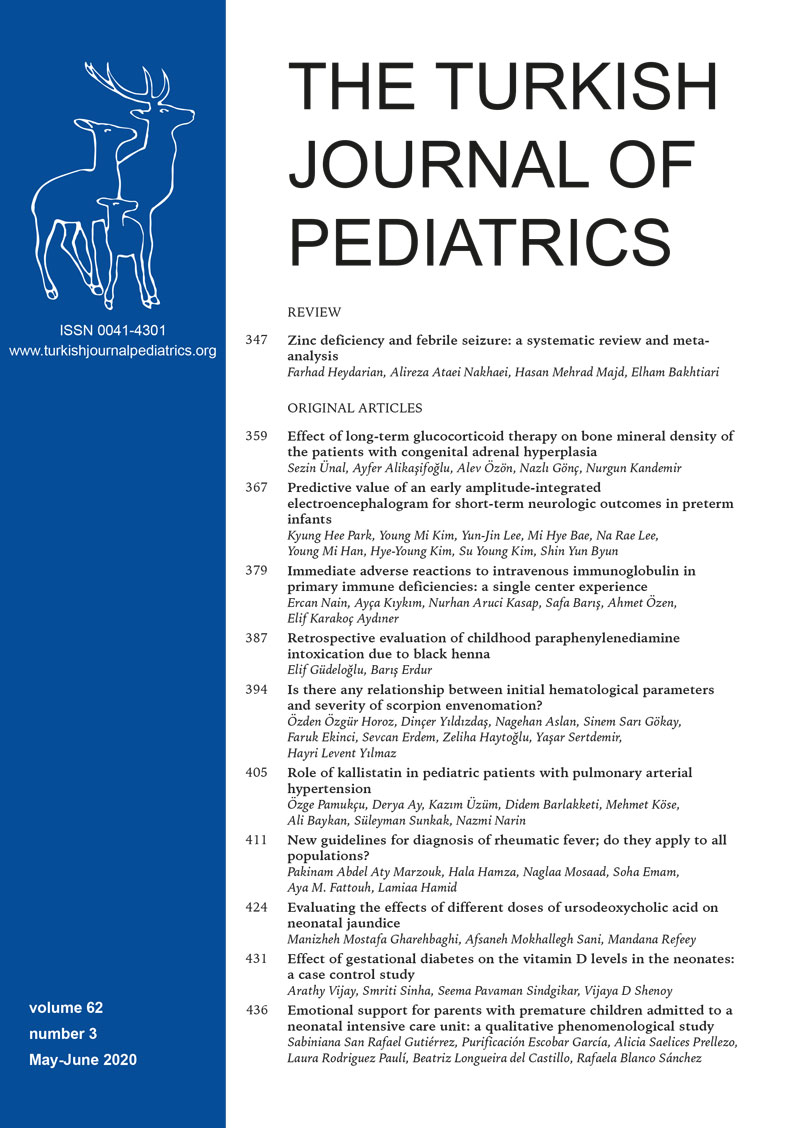Abstract
Background and Objectives. The aim of this study was to compare serial scores of amplitude-integrated electroencephalography (aEEG) in preterm infants with favorable neurologic outcome compared with those with unfavorable neurologic outcome and to evaluate whether aEEG in the early days of life has predictive value for short-term neurologic outcome in preterm infants.
Methods. This prospective observational study included infants born at ≤32 weeks of gestational age and ≤1,500 g of birth weight. On the basis of brain ultrasonography findings, the infants were divided into two groups (favorable and unfavorable outcome group) at 36 weeks of corrected age or at discharge. aEEG was performed at 12-14 h (day-1), 46-48 h (day-2), 70-72 h (day-3), and 1 week (day-7) of life. The aEEG recordings were analyzed using the criteria described by Burdjalov et al.23 and the serial scores of aEEG were compared between the two groups.
Results. Thirty five infants were enrolled and 18 infants and 17 infants were identified into both groups, respectively. Infants in the favorable outcome group showed high scores in almost all parameters and the score of all parameters increased over time. However, the scores of all components decreased in day-2 compared with those of day 1 in the unfavorable outcome group. The total score less than 3 of day-2 has predictive value of 70.6% of sensitivity and 72.2% of specificity for unfavorable outcome.
Conclusion. We found that aEEG is a useful predictor for short-term neurologic outcome in preterm infants.
Keywords: amplitude-integrated electroencephalography; preterm infant; neurological outcomes; periventricular leukomalacia
Copyright and license
Copyright © 2020 The Author(s). This is an open access article distributed under the Creative Commons Attribution License (CC BY), which permits unrestricted use, distribution, and reproduction in any medium or format, provided the original work is properly cited.














